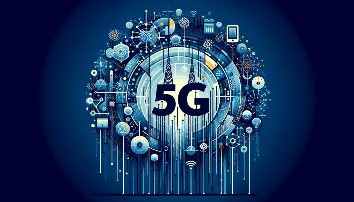
5G technology significantly enhances network performance monitoring by providing operators with real-time insights, unparalleled data analysis capabilities, and a proactive approach to network management.
With features like low latency, vast connectivity, and advanced analytics, 5G enables more efficient monitoring of network resources and user experiences, resulting in improved service quality and operational efficiency.







As networks continue to evolve with the adoption of 5G, the tools and methodologies for performance monitoring will also advance, enabling telecom operators to meet the rising demands of modern communication.
5G technology enhances network performance monitoring through several advanced features and capabilities that provide real-time insights, improved analytics, and more proactive management of network resources. Here are key aspects of how 5G transforms network performance monitoring:
### 1. **Real-Time Data Collection**
– **Increased Data Throughput:** 5G networks support high data rates, enabling the capture of vast amounts of performance metrics in real-time from various network components (e.g., base stations, routers, switches).
– **IoT Integration:** The deployment of IoT sensors across the network infrastructure allows for continuous monitoring of various parameters, such as temperature, humidity, and power consumption, enhancing overall network health assessments.
### 2. **Low Latency Monitoring**
– **Immediate Feedback:** The ultra-low latency characteristic of 5G enables instantaneous reporting of network performance issues, allowing for rapid diagnosis and correction.
– **Proactive Management:** Network operators can receive alerts and notifications about potential problems as they arise, reducing downtime and improving service reliability.
### 3. **Advanced Analytics**
– **AI and Machine Learning:** Leveraging AI and machine learning algorithms, network performance data can be analyzed for patterns and anomalies, facilitating predictive maintenance and capacity planning.
– **Real-Time Analytics Dashboards:** Network operators can utilize sophisticated dashboard solutions that offer visualization of key performance indicators (KPIs), enabling quick decision-making based on current network conditions.
### 4. **Network Slicing Visibility**
– **Performance Isolation:** 5G allows operators to create virtualized network slices optimized for different applications or services. Monitoring these slices ensures that performance metrics specific to each slice (e.g., bandwidth, latency, and reliability) are maintained according to service-level agreements (SLAs).
– **Tailored Resource Allocation:** Operators can monitor resource usage per slice and dynamically allocate bandwidth as needed to maintain optimal performance across diverse applications.
### 5. **Quality of Experience (QoE) Monitoring**
– **User-Centric Insights:** 5G technology enables the monitoring of individual user experiences across different devices and applications, providing critical feedback on service quality from the customer’s perspective.
– **End-to-End Performance Measurement:** Operators can track performance metrics along the entire communication path, from the device to the core network, capturing any bottlenecks or interruptions that impact the user experience.
### 6. **Enhanced Geographic Coverage Monitoring**
– **Dynamic Coverage Mapping:** Utilizing real-time data, operators can visualize and monitor the coverage of their networks dynamically, identifying areas with weak signals or high drop rates.
– **Remote Troubleshooting:** Network management tools can assist in pinpointing issues geographically, facilitating targeted maintenance efforts.
### 7. **Edge Computing Benefits**
– **Local Data Processing:** By processing data closer to where it is generated (at the edge of the network), operators can significantly reduce latency and improve response times for applications requiring immediate action.
– **Collaborative Resource Management:** Edge nodes can assist in monitoring and managing local traffic conditions, allowing network operators to adapt resources according to demand patterns directly.
### 8. **Enhanced Security Monitoring**
– **Intrusion Detection Systems (IDS):** 5G networks can integrate advanced security monitoring systems that detect unusual patterns and potential threats in real-time, improving overall network security.
– **Anomaly Detection:** Machine learning algorithms can analyze performance data to identify anomalies that may indicate security breaches or incorrect configurations.
### 9. **Integrated Network Management Systems**
– **Unified Monitoring Platforms:** 5G enables the consolidation of different monitoring tools and platforms into a single interface, simplifying network management and providing a holistic view of network performance.
– **Automated Reporting:** Automated systems can regularly generate reports on performance metrics, making it easier for operators to track trends over time or prepare for compliance audits.
### 10. **Support for Multi-Access Edge Computing (MEC)**
– **Edge Application Monitoring:** MEC allows the deployment of applications at the edge, where local data processing occurs. This setup can also facilitate performance monitoring of edge applications in real-time, enhancing responsiveness and user experience.
– **Local Network Insights:** Connectivity to local edge devices allows for specific monitoring of applications that run in proximity to the user, enabling performance tuning based on regional demand and usage patterns.


Leave a Reply